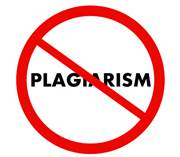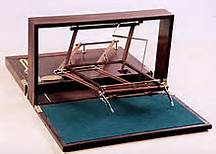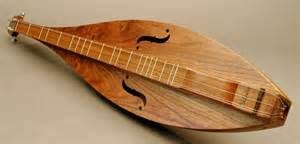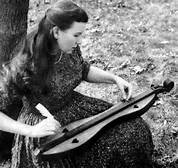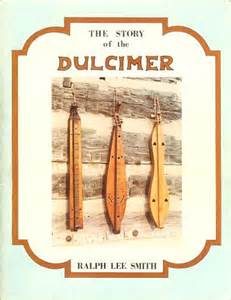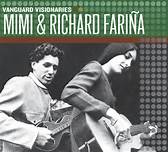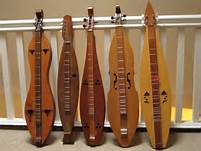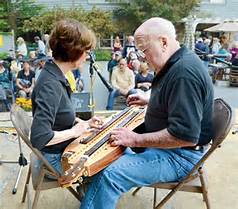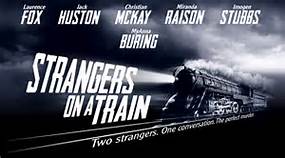 Until the release of the film Carol last year, I had given little thought to Patricia Highsmith, who was born Mary Patricia Plangman, in Fort Worth. I had read her novel The Talented Mr. Ripley with interest and mild “guilty-pleasure” enjoyment and thought maybe Graham Greene was onto something when he called her “the poet of apprehension.” When I saw the film version with Matt Damon as Tom Ripley, I was impressed, though skeptical sometimes of the role luck and coincidence play in the storyline. Could the cunning protagonist of this picaresque tale really be so perfectly configured for the ruses he perpetuates? Could he improvise so swiftly, precisely and effectively? It hardly matters, as Minghella has given us a version of Tom even more villainously seductive (and twisted) than the novelist created, and I was willing to suspend my disbelief. No matter how sharp are the edges of his essential “HARM” that press from within the slight camouflaging of Tom’s “CHARM,” I was charmed, intrigued almost (or just barely) to the point of empathy.
Until the release of the film Carol last year, I had given little thought to Patricia Highsmith, who was born Mary Patricia Plangman, in Fort Worth. I had read her novel The Talented Mr. Ripley with interest and mild “guilty-pleasure” enjoyment and thought maybe Graham Greene was onto something when he called her “the poet of apprehension.” When I saw the film version with Matt Damon as Tom Ripley, I was impressed, though skeptical sometimes of the role luck and coincidence play in the storyline. Could the cunning protagonist of this picaresque tale really be so perfectly configured for the ruses he perpetuates? Could he improvise so swiftly, precisely and effectively? It hardly matters, as Minghella has given us a version of Tom even more villainously seductive (and twisted) than the novelist created, and I was willing to suspend my disbelief. No matter how sharp are the edges of his essential “HARM” that press from within the slight camouflaging of Tom’s “CHARM,” I was charmed, intrigued almost (or just barely) to the point of empathy.
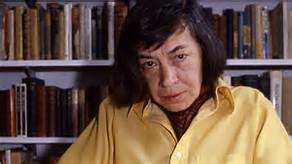 I did not realize that Strangers on a Train, the novel from which Hitchcock sculpted his famous film, was also Highsmith’s, her first, but it explores a theme or proposition that runs not just through TTMR, but through Ripley Under Water, Ripley Under Ground and Ripley’s Game. I have not read The Boy Who Followed Ripley, but I expect similar features permeate it. The abiding motif that moves Highsmith’s people and plots concerns the existence of evil and sociopathic behavior melded into the most civilized of people. “Good” people like Guy Haines do bad things; we know that from the media and from Twain’s warning that “virtue is often another name for the lack of opportunity,” but Highsmith is interested in the ways that amoral behavior, right down to regretless murder, can lie dormant in people whose cultivation would seem to leave little room or inclination for smashing a guest with a wine bottle (in the wine cellar) till his legs quit wiggling (a scene clearly nodding to Poe, if not Clue). Recognizing these elements in action, The New Yorker once called her “peerlessly disturbing.”
I did not realize that Strangers on a Train, the novel from which Hitchcock sculpted his famous film, was also Highsmith’s, her first, but it explores a theme or proposition that runs not just through TTMR, but through Ripley Under Water, Ripley Under Ground and Ripley’s Game. I have not read The Boy Who Followed Ripley, but I expect similar features permeate it. The abiding motif that moves Highsmith’s people and plots concerns the existence of evil and sociopathic behavior melded into the most civilized of people. “Good” people like Guy Haines do bad things; we know that from the media and from Twain’s warning that “virtue is often another name for the lack of opportunity,” but Highsmith is interested in the ways that amoral behavior, right down to regretless murder, can lie dormant in people whose cultivation would seem to leave little room or inclination for smashing a guest with a wine bottle (in the wine cellar) till his legs quit wiggling (a scene clearly nodding to Poe, if not Clue). Recognizing these elements in action, The New Yorker once called her “peerlessly disturbing.”
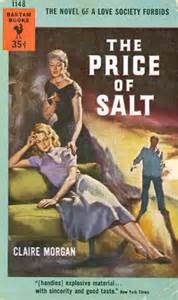 However, we are familiar with this kind of story by now because of Hannibal Lector. All his Mozart and rare merlot fail to mitigate his, well, appetite for vengeance, as well as the thrill of descending ex nihilo into the lives of the guilty and innocent alike. I didn’t make this connection between Thomas Harris and Patricia Highsmith right away, as Carol (from the novel The Price of Salt, published under the nom de plume Claire Morgan) is not so concerned with this twisted mix, and the villains in that piece are not the focal characters. Hitchcock’s version of Strangers on a Train is a little off track, too, as he compresses the second half of the novel (the hands too soiled for all the perfumes of Araby to cleanse them, that extended regret bit) and focuses, rightly, on a special feature of Highsmith’s story.
However, we are familiar with this kind of story by now because of Hannibal Lector. All his Mozart and rare merlot fail to mitigate his, well, appetite for vengeance, as well as the thrill of descending ex nihilo into the lives of the guilty and innocent alike. I didn’t make this connection between Thomas Harris and Patricia Highsmith right away, as Carol (from the novel The Price of Salt, published under the nom de plume Claire Morgan) is not so concerned with this twisted mix, and the villains in that piece are not the focal characters. Hitchcock’s version of Strangers on a Train is a little off track, too, as he compresses the second half of the novel (the hands too soiled for all the perfumes of Araby to cleanse them, that extended regret bit) and focuses, rightly, on a special feature of Highsmith’s story.
That feature is a kind of moral (and mortal) chiasmus: “Hey, stranger, if you agree to kill my intolerable father, I’ll kill your malicious estranged wife, and the police will never suspect, as neither of us has a motive beyond this confidential and 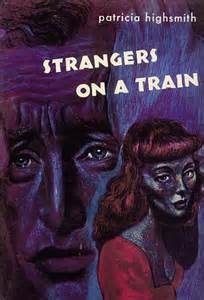 unlikely pact.” The problem, of course, lies in the asymmetry: Bruno, the proposer of this vile swap, is one of those cultured and idle (but still boorish, in this case, and off-putting) very rich who are not like the rest of us, and the other is an essentially decent-leaning architect who must be coerced and driven to uphold “his” end of a bargain he never actually agreed to. The premise is engaging, if only for the narrative structure, and Hitchcock’ s trimming and additions (especially the carrousel imagery) fit the concept nicely. Highsmith is more interested in exploring what might drive her protagonist Guy (or Everyman?) to fall under Bruno’s spell and how his act might gnaw and abrade Guy’s soul, agenbite of inwit, so to speak. It’s also hard to fault her vision of the spoiled brat monster who starts the plot in motion.
unlikely pact.” The problem, of course, lies in the asymmetry: Bruno, the proposer of this vile swap, is one of those cultured and idle (but still boorish, in this case, and off-putting) very rich who are not like the rest of us, and the other is an essentially decent-leaning architect who must be coerced and driven to uphold “his” end of a bargain he never actually agreed to. The premise is engaging, if only for the narrative structure, and Hitchcock’ s trimming and additions (especially the carrousel imagery) fit the concept nicely. Highsmith is more interested in exploring what might drive her protagonist Guy (or Everyman?) to fall under Bruno’s spell and how his act might gnaw and abrade Guy’s soul, agenbite of inwit, so to speak. It’s also hard to fault her vision of the spoiled brat monster who starts the plot in motion.
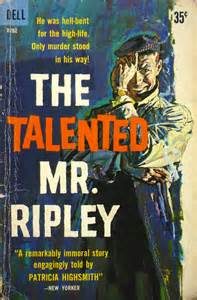 What does it mean to slip “involuntarily” into crime and out of the moral community? How do minds in the midst of that transaction operate? Interesting question, and prominent in TTMR, but less so in the other Ripley books, after Tom has plenty of blood on his hands, a settled life in France, a healthy cash flow. In the later Ripley books, it’s his involvement with art forgery that interests me. The counterfeit Derwatts and the conspiracy of impersonations and extravagant lies that foist them onto a somewhat deserving cadre of connoisseurs lead Tom to conduct himself as blithely and conniving as a Bunburying Wilde mischief maker. But it all runs to leftover stew in most of the Ripley books, as Highsmith is not a careful stylist (too fond of “thriftily” and worse) or a convincing orchestrator of forensic suspense. The information in the separate books overlaps too much for my taste, but what she is exquisitely configured for are the many delays before the anticipated inevitable other shoe drops. She provides and relishes domestic details, harpsichord lessons, art chat, gardening, sartorial options, travel pointers and culinary details, plus the stolidly agreeable antics of Mme. Annette, the loyal housekeeper, to keep the reader pondering that old question: where’s the beef? Or the body? As Time noted, she is highly skilled at “eliciting the menace that lurks in the familiar surroundings.” Once Tom ceases to be the ambitious young con artist on the make and evolves to the dragon protecting his trove, he loses zest and novelty, and the questions of his conscience are long ossified to givens.
What does it mean to slip “involuntarily” into crime and out of the moral community? How do minds in the midst of that transaction operate? Interesting question, and prominent in TTMR, but less so in the other Ripley books, after Tom has plenty of blood on his hands, a settled life in France, a healthy cash flow. In the later Ripley books, it’s his involvement with art forgery that interests me. The counterfeit Derwatts and the conspiracy of impersonations and extravagant lies that foist them onto a somewhat deserving cadre of connoisseurs lead Tom to conduct himself as blithely and conniving as a Bunburying Wilde mischief maker. But it all runs to leftover stew in most of the Ripley books, as Highsmith is not a careful stylist (too fond of “thriftily” and worse) or a convincing orchestrator of forensic suspense. The information in the separate books overlaps too much for my taste, but what she is exquisitely configured for are the many delays before the anticipated inevitable other shoe drops. She provides and relishes domestic details, harpsichord lessons, art chat, gardening, sartorial options, travel pointers and culinary details, plus the stolidly agreeable antics of Mme. Annette, the loyal housekeeper, to keep the reader pondering that old question: where’s the beef? Or the body? As Time noted, she is highly skilled at “eliciting the menace that lurks in the familiar surroundings.” Once Tom ceases to be the ambitious young con artist on the make and evolves to the dragon protecting his trove, he loses zest and novelty, and the questions of his conscience are long ossified to givens.
I also read about two dozen of Highsmith’s short stories, which are mostly anecdotal or parable-like, scenarios almost right for Hitch’s TV series, but Highsmith doesn’t very often render the narratives convergent or epiphanic, and the supernatural is seldom invoked. They’re quirky and driven by circumstance, permeated with mood but neither moving nor intriguing. Stories in The Black House and Mermaids on the Golf Course offer more complexity than the other collections, but they still read more like aperitifs than courses. Still, they’re good enough to demonstrate that writing text for comic books didn’t diminish her cunning.
For those who want to know a bit about the author, she was born in Texas, preferred to live in Europe (England, France, Switzerland) and was an actively gay woman in a time when she must have encountered many obstacles, which did not come close to defeating her, though she was often, according to the dense biography, Beautiful Shadow: A Life of Patricia Highsmith by Andrew Wilson, unhappy. It would be hard not to admire her intrepid nature, and her pursuit of the questions and characters who captured her imagination might have made her apprehensive herself concerning the poor bare forked animal. Her work ethic and dedication to following or breaking conventions according to her own muse, however, were unassailable.
One anomaly among Highsmith’s novels, The Glass Cell (1964), deserves consideration in its sub-genre, the prison novel. It recounts the experiences of the naïve Philip Carter, who is convicted of fraud he did not commit. Once released, he finds that the six years in the calaboose have left him more suspicious and violent than he ever imagined. His creator was a great lover of Kafka, but the transformation of Carter is less allegorical and mysterious and more recognizable.
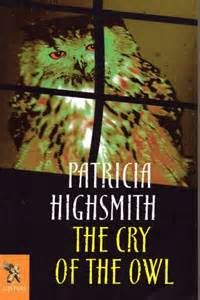 Before closing the dossier (though there are more Highsmith novels about, and I can’t say I’ll always be able to resist them), I want to recommend another of her books that stands apart from her oeuvre (which includes twenty novels and a battalion of short stories). Her eighth novel, The Cry of the Owl, strikes me as driven more by curiosity concerning a lonely man’s marginal behavior than by moral equations and hypotheses. I actually saw the film in its early and foreign rendition (La cri du hibou) years ago and never even noted the author. After I read the novel, I Netflixed the English film derived from both the French Canadian movie and the novel and liked it very much, despite some inexpert accounts of gunfights and fist fights. (Action scenes are not her strong suit.)
Before closing the dossier (though there are more Highsmith novels about, and I can’t say I’ll always be able to resist them), I want to recommend another of her books that stands apart from her oeuvre (which includes twenty novels and a battalion of short stories). Her eighth novel, The Cry of the Owl, strikes me as driven more by curiosity concerning a lonely man’s marginal behavior than by moral equations and hypotheses. I actually saw the film in its early and foreign rendition (La cri du hibou) years ago and never even noted the author. After I read the novel, I Netflixed the English film derived from both the French Canadian movie and the novel and liked it very much, despite some inexpert accounts of gunfights and fist fights. (Action scenes are not her strong suit.)
The novel is set in the U.S. (like SOAT) but in the East, rather than Texas, and its protagonist and his travails ring, even half a century later, true enough to be unsettling, especially on a dreary night. And just to remove a needless element of suspense, the title does refer to the folkloric – an owl’s cry predicts something ominous, probably a death. Considering how many owls I hear where I live and how many people die, it seems a fair association to me, but I’m no folklore statistician nor ornithologist.
The larger structure of the story may remind some of SOAT. Here, a gloomy and aimless young man begins spying on a young woman, Jenny, who lives alone in a wooded area. He’s not exactly a stalker, but he derives satisfaction from watching through a window as she cheerily conducts her housework. No aggression and nothing sexual. He almost sleepwalking, desperate for something to distract him from his own depression. She catches him, and with that structural instinct, Highsmith soon reverses the situation, though Jenny’s agenda is more specific than the protagonist’s. So, the criss-crossing again.
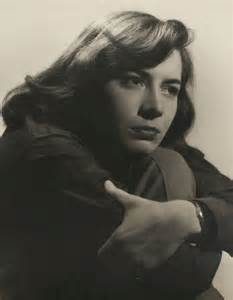 Highsmith has in Robert Forester created a decent, damaged, sympathetic character who has no interest in transgression but finds himself. for all his dedication to calm and deliberateness, drawn into irrationality, violence, police business, travesty and tragedy. For all his attempts at meditation and caution, he finds the world given to the Lord of Misrule, and harm follows.
Highsmith has in Robert Forester created a decent, damaged, sympathetic character who has no interest in transgression but finds himself. for all his dedication to calm and deliberateness, drawn into irrationality, violence, police business, travesty and tragedy. For all his attempts at meditation and caution, he finds the world given to the Lord of Misrule, and harm follows.
It’s probably no mistake that Robert is reminiscent of Camus’ Meursault; Highsmith was an admirer of the existentialist writers and would very likely have been smitten with both Camus’ signature novel and his play “Le Malentendu.” But what drew me into the story and held me were her renderings of place, weather, mood, fragile details and Robert’s slow-motion, scrupulous mind, understanding too late how much momentum has gathered and is unleashed. It’s a novel of disaffection and helplessness, of disguised bad choices and the long memory of bad luck. A New Yorker critic praised the book for its brand of fear, “the dread of humiliation,” and I was entranced (and shaken in my recognition) by that feature, but I have to admit that I also loved hating Nickie, Robert’s unscrupulous and indefatigable estranged wife. She’s a sniper with memorable and horrifying skills. Jenny is far more sympathetic and intriguing, but now and then it’s a treat to have unsympathetic nasties like Nickie and Jenny’s frustrated paramour Greg.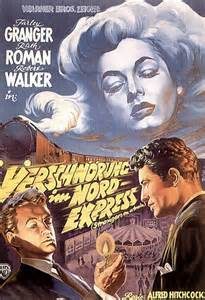
But it’s time to move on. I have a ghost story I want to read, another Appalachian novel by Robert Morgan, a big book of Walt Kelly’s Pogo cartoons and Audubon’s Missouri River Journals. And I plan to be more whimsical and less driven in some future posts. For now, Sample Highsmith and see if she fits your pistol. Comments are welcome below. A demain.


